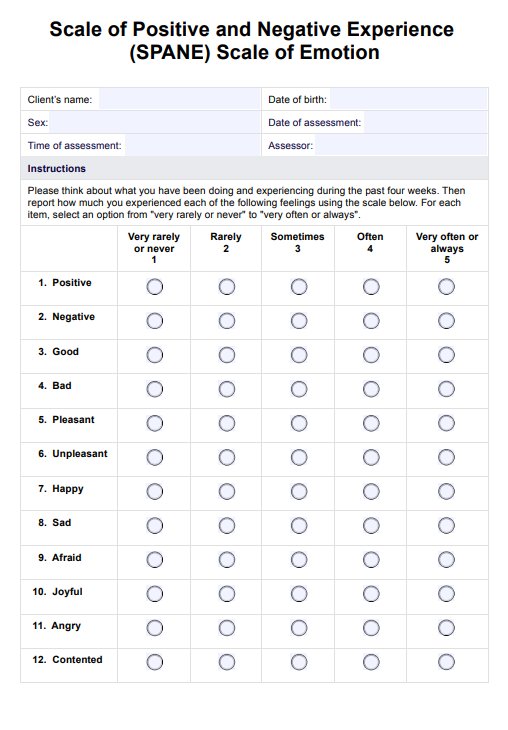Yes, the SPANE scale demonstrates strong reliability and validity, with good internal consistency and convergent validity when compared to other well-being measures.

SPANE Scale of Emotion
Assess your client's emotional well-being using the SPANE Scale of Emotion to enhance treatment plans and interventions during sessions.
Use Template
SPANE Scale of Emotion Template
Commonly asked questions
The SPANE scale measures an individual's emotional well-being by assessing the frequency of both positive and negative emotions experienced over time.
Affect can be a trait or state. Positive affect includes emotions like joy, energy, and enthusiasm, while negative affect involves distress, anger, and fear.
EHR and practice management software
Get started for free
*No credit card required
Free
$0/usd
Unlimited clients
Telehealth
1GB of storage
Client portal text
Automated billing and online payments











